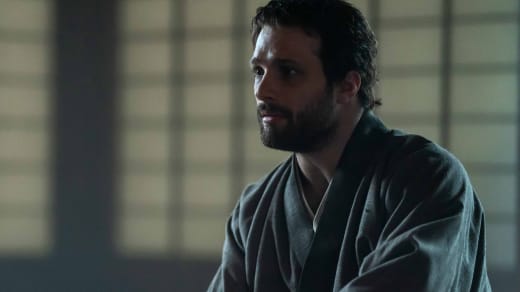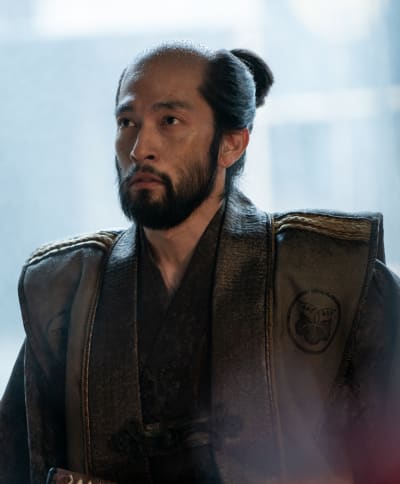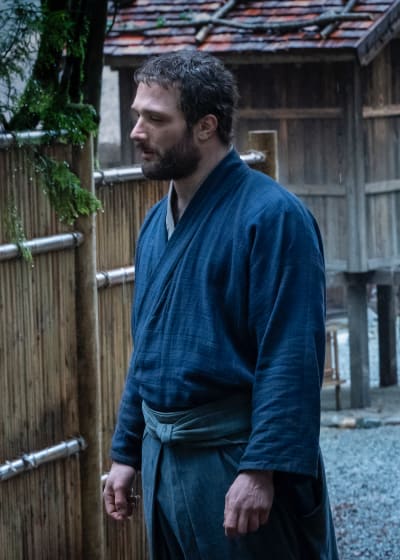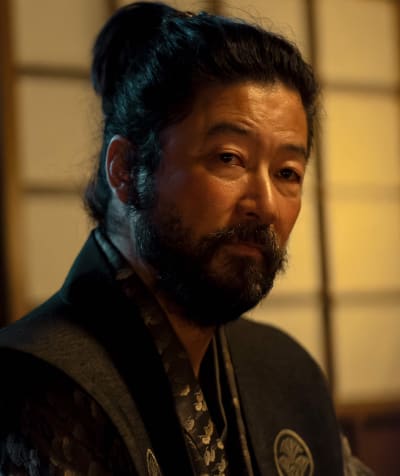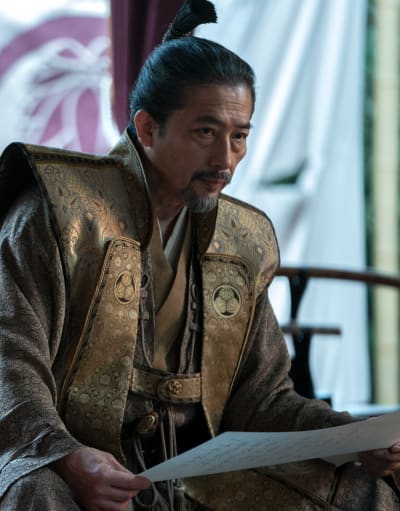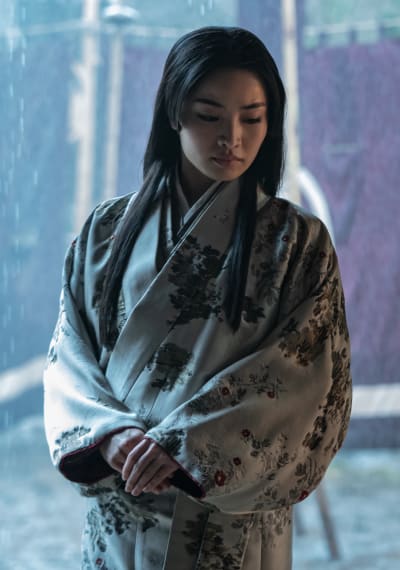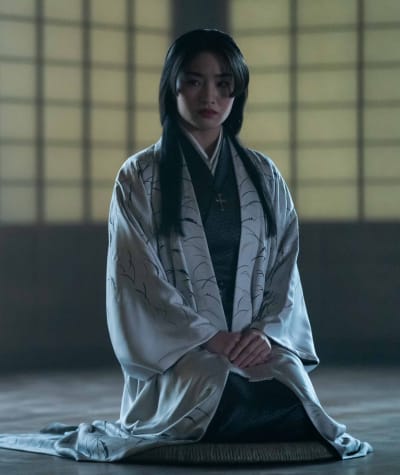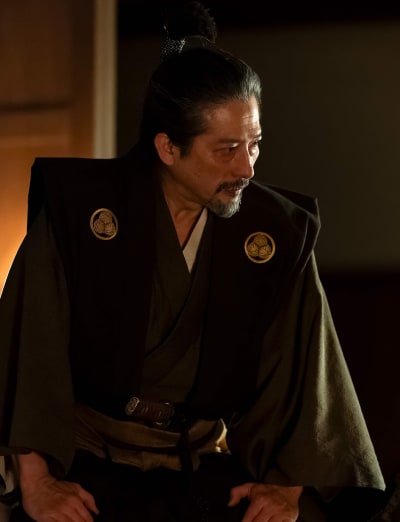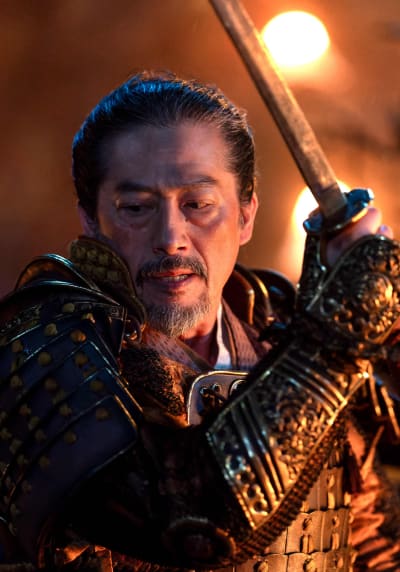[ad_1]
Shogun has skyrocketed to the highest of the streaming rankings, somewhat over a month since its preliminary two-episode launch, with tens of millions of views in its first week.
This wasn’t a straightforward feat contemplating the debut success of different FX or Hulu hard-hitters, corresponding to The Bear, The Handmaid’s Story, and The Nice.
Speedy comparisons to Sport of Thrones had been inevitable, given the present’s heavy political intrigues set in Seventeenth-century feudal Japan.
As with hottest debuts that delve closely into cultures overseas to our personal, some critics pointed to the white savior trope, drawing traces between Shogun and Dances with Wolves, The Final Samurai, and even Avatar.
Happily, these traces failed to fulfill actuality.
The sympathetic, apologetic nature of the white savior plot does not stand as much as scrutiny inside Shogun’s rigorously constructed mimicry of real-life Japan within the 1600s.
The eye to element is bar none, with creators Justin Mark and Rachel Kondo (a husband and spouse staff), alongside Hiroyuki Sanada of John Wick: Chapter 4 fame, indulging in a painstaking recreation course of.
The “stranger in a wierd tradition or land” archetype is commonly an integral storytelling system.
Typically sufficient, the Graham Wellingtons of the world are inexplicably immersed into an alien and generally hostile setting, surrounded by common thinkers, bumbling supporting characters, and a savage, oppressive antagonist. You know the way the story unfolds from there.
The white protagonist follows the everyday hero’s journey, elevating the lesser races round him and in the end saving them from both an outdoor pressure or their self-destruction.
Shogun embraces a extra sensible imaginative and prescient of an historic time, when many of the horizon was stuffed with lush greenery and mountains layered in blankets of mist, relatively than the boring, lifeless metallic and plastic equipment of recent trade.
It additionally displays a time when virtually each nation, Japan included, was leery of foreigners.
Earlier than sakoku (a shogunate coverage of commerce isolation), Japan traditionally held a free commerce and spiritual relationship with Portuguese retailers and missionaries.
That is the timeframe wherein Shogun falls, simply because the English make their approach into the image, manufacturing a collision between a number of cultures, religions, and methods of life.
Within the collection, John Blackthorne (Cosmo Jarvis) is the Anjin (Pilot) of the Dutch warship/buying and selling ship, the Erasmus. Shogun Season 1 Episode 1 opens with the Erasmus at a turbulent time, each inside and with out.
As a storm batters the ship, the captain finds the closest exit to the afterlife, with Blackthorne assuming technical command.
A title card units the scene, with the Erasmus ultimately floundering on the sharp rocks of Ajiro, on Japan’s shoreline, earlier than being captured by the native samurai.
We instantly see that the showrunners are taking issues in a path other than the Shogun novel by James Clavell, the inspiration for the present.
As an alternative of the white outsider stumbling right into a world of indigent peasants, there’s a cultural collision of each hilarity and profound savagery. The latter time period is used fairly a bit, and for good purpose. As an alternative of embracing the white savior trope, Shogun as a substitute opts for a extra inclusive tone.
Sadly, ‘inclusion’ comes with its personal caveat. Whereas the captured, emaciated sailors (Blackthorne included) are foul-mouthed, unwashed, shambling corpses in all however title, the Japanese are cultured, refined, respectful, and solemn.
However do not let the guise idiot you. Quickly, Kashigi Yabushige, the ruler of this native fief, is boiling a person alive. Blackthorne witnesses one other man all of a sudden and viciously beheaded for the crime of standing in place for too lengthy.
What may have been one other rehash of Dances with Wolves, the Japanese model, is as a substitute an intense revelation of the astonishing variations in historic, largely remoted cultures, together with the merciless similarities shared by all human beings over the centuries.
In feudal Japan, it is best to thoughts your manners, otherwise you’ll end up eight inches shorter in a rush. As an alternative of instantly rising up the ranks in a overseas society, Blackthorne spends most of his time leaping forwards and backwards between astonished befuddlement and terror.
Jarvis does a wonderful job of conveying the horror of being taken prisoner by a overseas society, of which little to nothing is thought; his each motion and gesture is probably perceived as a killing insult.
The language is totally overseas to him, and his life and demise hold within the steadiness whereas he stands inside a cone of silence and confusion.
One scene specifically units the tone for the whole first episode and past. As Blackthorne kneels earlier than Yabushige, a Portuguese interpreter is delivered to the fore. This interpreter speaks mangled Japanese at greatest and has nothing however a ferocious antipathy in direction of the prisoner.
As Blackthorne tries to say his piece, the interpreter angrily interprets, usually inserting his personal biases and hilariously (if not for the state of affairs) horrible Japanese.
Ultimately, Blackthorne descends into bouts of vulgarity and violence, born of the confusion and worry of the second. It is a crystal-clear view into the affect of two outsiders, overseas to one another, coping with one other overseas get together whose pursuits are largely hidden.
The primary episode spends most of its time with Blackthorne however alternates between him and Lord Yoshi Toranaga, one of many 5 regents that rule Japan as a council.
This council exists on the behest of the late Taiko, because the inheritor is simply too younger to rule in his personal proper. That is the place the present’s political intrigue picks up. Once more, the white savior trope is deftly turned apart.
As an alternative of a backward civilization needing saving, we witness a posh energy wrestle inside a cultured, refined society with its personal superior structure and solemn, aesthetic magnificence.
4 of the 5 regents are set to vote on the impeachment of Toranaga, arguably the collection’ chief or, on the very least, co-equal protagonist.
On this case, an impeachment led by the Council of Regents means demise. Toranaga, brilliantly performed by Hiroyuki Sanada, is actually the captive of Ishido Kazunari (Takehiro Asano), one of many regents who additionally occurs to have the rest of the council below his affect.
We’re additionally launched to Toda Mariko (Anna Sawai), a Toranaga loyalist and up to date Catholic convert.
Whereas Toranaga and Mariko kind the political basis of the collection, in addition they be part of Blackthorne because the three protagonists round which the whole collection revolves.
As an alternative of sticking with the PoV of Blackthorne, just like the guide, the collection delves deeply into the viewpoints of all three, bringing Seventeenth-century Japan to roaring life within the course of.
One factor the collection and the guide share intently is the world that surrounds these characters. It’s lush, vibrant, and teeming with life by way of characters, the buildings of the time, the rituals, and the colliding spiritual perception programs.
Whereas Toranaga and Mariko navigate an in-depth political battle, Blackthorne, as a Protestant, faces his archenemy within the Catholic church. Quickly, nonetheless, Blackthorne finds himself inside the presence and affect of Toranaga and Mariko.
Although Blackthorne displays an affinity for serving to to avoid wasting the day, he additionally falls sufferer to the political machinations of Toranaga and the romantic affect of Mariko.
Anna Sawai is enjoyable to observe as she ties the threads of Toranaga’s political intrigues collectively, navigates her residence life towards a verbally abusive and dismissive husband (Buntaro), and serves as a translator for Toranaga.
Because the collection progresses, the extraordinary and delicate political state of affairs is balanced by dramatic sub-plots and Blackthorne’s emotions in direction of the Portuguese Catholic presence.
Although Blackthorne is a major character all through, his elevation in Japan’s distinctive however acquainted feudal system is totally because of the good graces of Toranaga.
Not solely does this work inside the story’s fiction, however it additionally is smart from a sensible standpoint. Feudal Japan was not some misplaced society, wandering out and in of caves, wielding golf equipment as weapons, and fingerpainting their nation’s historical past on rock partitions.
They had been a longtime, complicated society with inner and exterior struggles. Blackthorne is an outsider trying in, owing his rise to their generosity.
Toranaga isn’t any idiot; he acknowledges the worth of what Blachthorne brings to the desk and makes use of him like a chess piece in his survival sport.
His reference to Blackthorne results in mutual respect, which pays dividends in Shogun Season 1 Episode 5, as Blackthorne involves Toranaga’s help out of allegiance relatively than from the angle of a superior to an inferior.
From the standpoint of character development, the white savior is, once more, neatly deflected. As an alternative, we witness a captivating arc that transcends the Hollywood of yesterday’s propensity in direction of the white salvation archetype.
Blackthorne goes from an alternately confused and shocked outsider to at least one that embraces lots of the qualities that made Japan the magical, spectacular empire of its day.
Mariko balances a journey from the housewife, residing below the yoke of a husband who clearly despises her, to a eager political ally whereas embracing and navigating a world outdoors the stricture of Buntaro’s shadow.
Toranaga performs the reluctant warrior, refusing the trail which will result in Shogun solely to acquiesce reluctantly.
His instincts are top-notch, and his designs are complicated and enjoyable to observe. By the tip of episode ten, there isn’t a feeling of watching a society saved from its defective designs by a white, honorable hero.
Although the huge engine of the leisure trade as soon as performed the white savior card to each apologize to and sympathize with varied cultures, it was all the time performed on the expense of that tradition.
It is laborious to apologize to somebody whereas calling them a wasteful dullard with no hope of self-salvation. That mentioned, Shogun does one thing that lots of at the moment’s common and unpopular reveals fail to do.
It manufactures a world that is loosely primarily based on historic actuality, freed from the white savior trope, with out falling sufferer to changing into a preachy caricature of recent political arguments.
It entertains with out insulting the viewers’s intelligence or the tradition of one other nation and its individuals.
Thomas Godwin is a employees author for TV Fanatic. You’ll be able to observe him on X
[ad_2]
